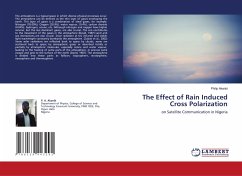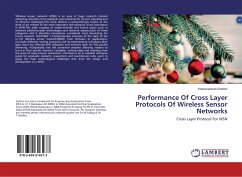
The Effect of Rain Induced Cross Polarization
on Satellite Communication in Nigeria
Versandkostenfrei!
Versandfertig in 6-10 Tagen
27,99 €
inkl. MwSt.

PAYBACK Punkte
14 °P sammeln!
The atmosphere is a typical space in which diverse physical processes occur. The atmosphere can be defined as the thin layer of gases enveloping the earth. This layer of gases is a combination of ideal gases, for example, Nitrogen (78.09%), Oxygen (20.9%), water vapour, (0.4%), carbon dioxide (0.04%), hydrogen, ozone, etc. Although nitrogen and oxygen have higher volume, but the less dominant gases, are also crucial. The sun contributes to the movement of the gases in the atmosphere (David, 1987) Land and sea interactions are also crucial. Solar radiation at UV, infrared and visible light wave...
The atmosphere is a typical space in which diverse physical processes occur. The atmosphere can be defined as the thin layer of gases enveloping the earth. This layer of gases is a combination of ideal gases, for example, Nitrogen (78.09%), Oxygen (20.9%), water vapour, (0.4%), carbon dioxide (0.04%), hydrogen, ozone, etc. Although nitrogen and oxygen have higher volume, but the less dominant gases, are also crucial. The sun contributes to the movement of the gases in the atmosphere (David, 1987) Land and sea interactions are also crucial. Solar radiation at UV, infrared and visible light wavelength constantly bombards the atmosphere. (Zubair et al., 2002) Some solar radiations are reflected back to space by clouds, some are scattered back to space by atmospheric gases or absorbed totally or partially by atmospheric molecules, especially ozone and water vapour, leading to the heating of some parts of the atmosphere, in process some escape and gets to the surface of the earth (David, 1987). The atmosphere is divided into these parts as follows: troposphere, stratosphere, mesosphere and thermosphere.












